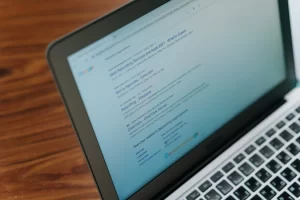An anchor text let users jump from one page to another, but this keeps them on the page. It is just like when an anchor is dropped into the water, the anchor keeps the boat in position, right? But even though you are constrained to a particular distance, you are still free to move away from the anchor point in any direction up to a certain distance.
The ability to highlight particular points of interest makes this web design technique popular with marketers. Due to the significance of anchor text’s role in link building, every SEO expert is aware of its importance.
Although links are occasionally inserted directly into the text (for example, https://www.toprankings.com.au), they are typically added with an “anchor” to improve the user’s reading experience.
To help you improve the user experience and your SEO efforts, we will share with you insights about anchor text in this blog.
However, let’s first define anchor text before we dive deep into its intricacies.
Key Takeaways
- Anchor text is the visible, clickable text in a hyperlink that helps users navigate and provides search engines with context about linked pages.
- There are seven main types of anchor text: exact match, partial match, phrase match, generic, branded, naked URLs, and image anchors.
- Using relevant and descriptive anchor text improves user experience and helps search engines understand page content more effectively.
- Optimised anchor text enhances internal linking structure, boosts SEO performance, and builds trust with users.
- Avoid using repetitive or vague anchor text like “click here” to prevent penalties and ensure meaningful navigation.
- Maintaining relevance, diversity, and consistency in your anchor text strategy is key to long-term SEO success.
Table of Contents
- Key Takeaways
- What is an Anchor Text?
- Types of Anchor Text
- The Importance of Anchor Text in SEO
- Why Anchor Text Matters to Your SEO Strategy
- How to Optimise Your Anchor Text
- Conclusion: Using Anchor Text Effectively
- FAQ
What is an Anchor Text?
You might discover that everyone online uses anchor text, whether consciously or unconsciously.
The visible, clickable text in a hyperlink is known as anchor text. Users can click on it to go to another page and it frequently appears as a blue piece of text. To put it simply, anchor text is visible to your user and can be clicked to link two web pages.
The terms “anchor text” and “link label” all refer to the same thing. Your website’s CSS and colour scheme will determine the text colour for your anchor.
Types of Anchor Text
You will discover that there are many kinds of anchor text you can use as you begin to understand more about how to write it. Here are seven common types of anchor text:
1. Exact Match
As the name implies, it occurs when the targeted keyword of the linked page appears in your anchor text. Let’s say you’re a tradie who wants to appear higher in search results for the keyword “tradesman near me.” The link is a direct reflection of the main text.
2. Partial Match
When you use partial match anchor text, the page you are linking to already uses a variation of your anchor text. As an illustrative example, the anchor text might read “tradesman” and link to a page that targets the keyword “how to find a reliable tradie.” It has a form of your anchor text, but it doesn’t match it exactly.
3. Phrase Match
Similar to this, the phrase match link title contains a specific phrase that your website is attempting to rank for. As we return to the construction industry example, those who are unsure of how to locate a tradesman might search using a simpler pattern. They might, therefore, be looking for “how to find a dependable tradie.”
4. Generic
Nobody can tell from generic anchor text what the link is about or what it covers. The words “Click here” and “Learn more” are the ones that leave users in the dark about where the link will take them. This style of anchor text is ineffective at informing your audience of the kind of content they can look forward to when they click the link.
5. Branded
When you use branded text, you hyperlink a brand’s name in the text to the website of the brand. You would link directly to TopRankings website, for instance, if you were discussing TopRankings and the SEO services they offer.
6. Naked URL
Without any actual anchor text, a link is considered naked. The URL is naturally used in the text. Instead of saying something like, “Visit us online to see all our services,” you might say, “Visit our website, www.toprankings.com.au, to see all our services.”
7. Image Anchor
Sometimes, as they say, a picture speaks a thousand words. Thankfully, it also works as an anchor. For search engines to understand what the image is about, don’t forget to add a descriptive text to it.
Importance of Anchor Text
Simply put, anchor text gives users and search engines context. The link label describes what the users will see if they choose to click on it and navigates to the linked page. On the other hand, search engines index and rank websites using the anchor text.
Relevance becomes important at this point. If the content being cited is not pertinent to the subject at hand, it may cost you website visitors as a result of poor user experience. Additionally, because the linked content doesn’t improve the user experience, search engines will rank your website lower.
Utilising anchor text wisely can boost readers’ trust in both your business and the website content you share. Additionally, it helps your SEO efforts by sending search engine crawlers the appropriate signals.
Why Anchor Text Matters to Your SEO Strategy
The majority of marketers are aware that one of the numerous important factors for improving your search engine rankings in the eyes of the Google Gods is link building.
However, it’s important to note that the words you use to link to and from your website matter a lot. These phrases are known as anchor text, and new users might not be aware of how much weight Google’s algorithms give them.
Anchor text is one of the myriad little details that make up the complicated structure of SEO. Anchors, which typically link to other webpages, can also start downloads and point to documents like PDFs or Google Drive files. Because of this, you should only click on anchors that are from trustworthy websites.
In order to rank web pages for the appropriate keywords, Google has always used anchor text to determine what the pages are about. In Google’s opinion, anchors offer more accurate descriptions of a link than the pages themselves can through use of metadata.
According to Google, anchors also assist the algorithm in indexing content that does not or is unable to provide a copy online, such as:
- Images
- Programs
- Apps
- Databases
- Documents
You really have no control over who links to your website or the anchor text they use. The anchor text on your site, however, is something you can manage. You can improve your ranking and make it simpler for Google to read and understand your page by optimising your anchor text for both users and search engine.
Use this guide if you’re looking to optimise your anchor text to help improve the user experience and your SEO strategy.
How to Optimise Your Anchor Text
When used correctly, anchor text can significantly improve user experience and SEO strategy. It can also help persuade visitors to do the desired action. To achieve the best results, it is crucial to follow a few fundamental guidelines when using anchor text.
Keep your links and anchor text consistent.
Be consistent throughout your page when creating anchor text and links to other pages. To keep your website looking professional, links should be as brief as possible.
Your links should all be roughly the same length, to start. Your website will become more consistent as a result, and your anchor text will look more cohesive overall. Keep your anchor text straightforward, relevant, and simple to read if you want to succeed with internal linking. You don’t want an abundance of blue hyperlinks to overwhelm your audience.
Be descriptive in your anchor text.
According to Google, anchor text should be descriptive and avoid using terms like “click here” and “page” as anchor text.
Always be clear and descriptive when writing anchor text so that your users will understand exactly what they will find when they click your link.
You will be surprised at how much good descriptive anchor text can improve user experience. It can actually have a significant impact.
Maintain the relevance of your text to the linked page.
Make sure you link to a relevant page when you create anchor text. You can boost the ranking of your page and increase its usefulness to users by adding a relevant link.
The subject of the source page determines the relevance. You are linking to this page with your anchor text. The link in the anchor text should take you to a page that is relevant to the anchor text.
Don’t always use the same anchor text for your links.
You will want to incorporate a few keywords into your content creation and writing in an attempt to boost the search engine ranking of your website. You shouldn’t link to content each time you use these keywords while incorporating them into your text. If you do this, Google will think something is off.
Google will assume that you forced the links into the text and that they aren’t natural. Your campaign won’t succeed as a result of this. Use links in anchor text only once to keep this from happening.
Use Anchor Text to Its Full Potential Now
The user experience is ultimately what determines how effective an anchor text is. You should write anchor text that will elevate your contents above those without links and persuade site visitors to take the desired action.
Make your anchor text stand out on your page by being concise, descriptive, and straightforward. If you do, we can’t promise you success, but we can promise that your website’s user experience will be improved and your chances of success online will increase.
Conclusion
If you are in need of a professional to help you out with your anchor text, you can always hire a reliable Melbourne SEO agency to get it done for you. At the end of the day, despite all the guides and tips available online, it is still the best course of action to let the professionals handle all the work to help you boost your search ranking.
Frequently Asked Questions (FAQ)
1. What is the purpose of anchor text in SEO?
Anchor text helps search engines understand the context of the linked page, improving indexing and rankings. It also guides users to relevant information, enhancing site usability.
2. Does the type of anchor text affect SEO performance?
Yes. Using exact match and descriptive anchors can positively influence rankings when used naturally. Overuse or irrelevant links may lead to penalties or reduced SEO effectiveness.
3. Is it bad to use “click here” as anchor text?
Using generic phrases like “click here” is not ideal. They don’t convey context or relevance to users or search engines. Instead, use anchor text that clearly describes the destination page.
4. Can image anchors help with SEO?
Yes, if properly implemented. Search engines rely on the image’s alt text to understand its relevance, making descriptive alt attributes essential for SEO when using image anchors.
5. How often should I change my anchor text strategy?
Regularly review and adjust your anchor text based on changes in your content strategy, keyword targeting, and SEO performance. Keeping your anchor text varied and natural is key.
6. Can too many internal links harm my website?
Yes. Excessive internal linking, especially with over-optimised anchor text, can confuse users and dilute the SEO value of your pages. Use links purposefully and sparingly.
7. Should I hire an expert for anchor text optimisation?
If you’re unsure how to implement a strategic anchor text plan or want to ensure compliance with SEO best practices, hiring an experienced SEO agency—like a trusted Melbourne SEO expert—can provide professional guidance and results.



